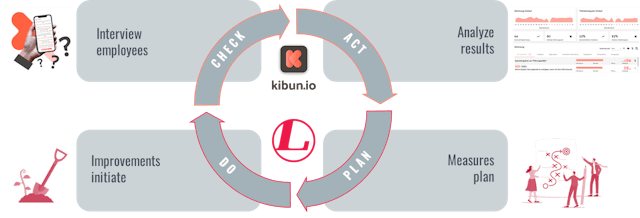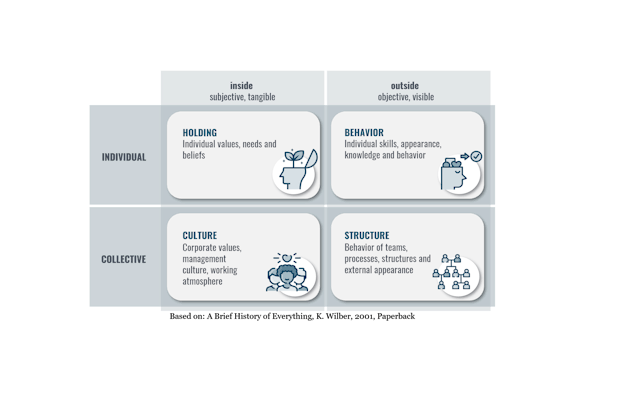Estimated reading time: 7 minutesWhat is this article about?
In today's dynamic business world, organizational culture is one of the key success factors. A healthy culture in organizations promotes innovation, adaptability, employee satisfaction and performance. But how can you make a culture measurable and manageable and what counts as part of an organizational culture?
On the one hand, organizational culture encompasses the shared values, beliefs, norms and rituals that shape behaviour and interactions within a company. On the other hand, an innovative orientation (vision, mission statement), communication dynamics and also cooperation structures shape the culture of a company. The organizational culture is the invisible bond that connects employees and gives them orientation.
In order to measure an organizational culture, employees must be involved. It is important to record the impact and effects of measures, actions and changes at regular intervals. Transformation projects in particular involve complex processes that often require far-reaching changes to the organizational structure and culture.
In order to be effective in the long term, changes must reach all employees (at all levels) and be firmly anchored in the corporate culture. Systematic support, structured analysis and visualization of the dynamics are offered by providers such as our cooperation partner Kibun.


